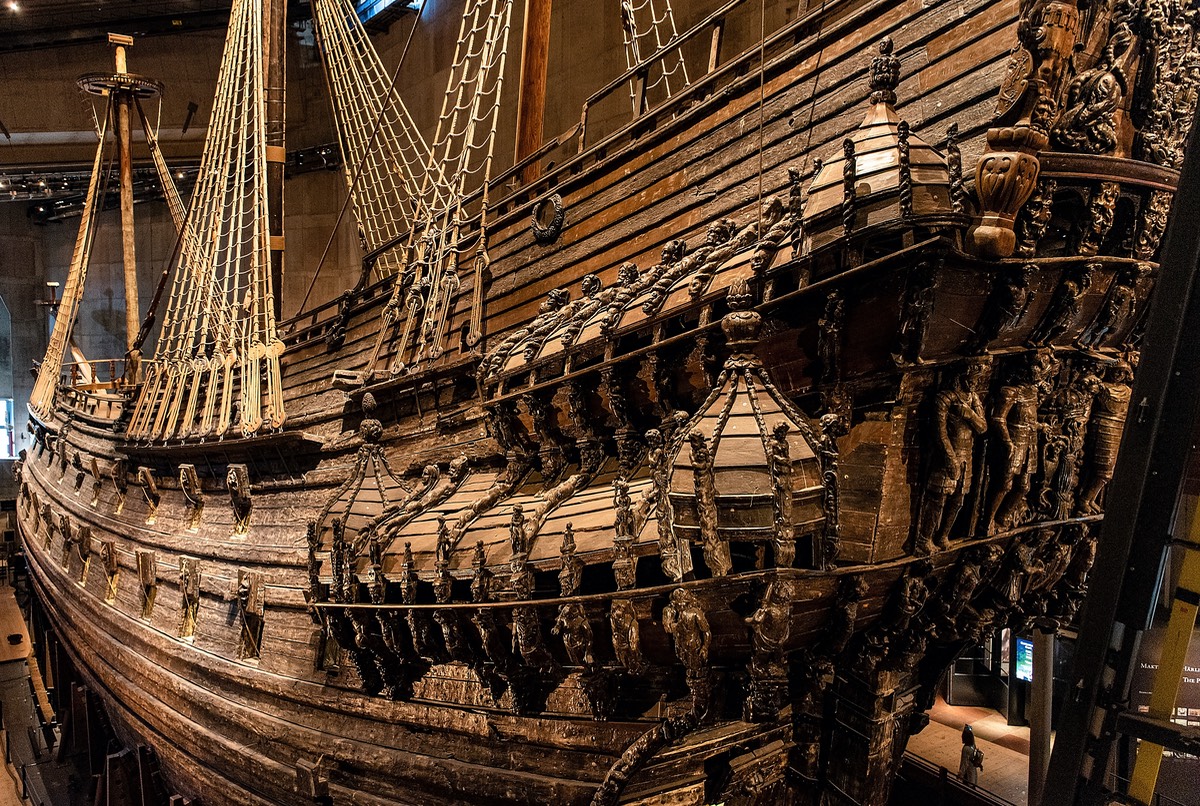
The Vasa Museum in Stockholm displays the 17th-century sailing vessel Vasa, fully restored after an ignominious sinking.
Unlike most vessels from the early days of the Age of Sail, which exist only in techical drawings and art, we have The Vasa herself because she simply heeled over in shallow waters on her maiden voyage a mile away from the quay and in full view of a gasping crowd on August 10, 1628.
A court of enquiry was convened to figure out what happened to $50 million worth of the King’s treasury funds.
The Gunnery-Officer Erik Jönsson said that he personally inspected the guns and that, given the vessel’s center of gravity, taking on more ballast would not have had any appreciable effect on the outcome.
The second-in-command Gierdsson personally saw to the arrangement of tons of stuff and said he "could not believe!" that the ship could have sunk under so slight a wind. Only fifty were drowned instead of five hundred because they were a stone’s throw from the land, so it was good, in a way, he felt, that this didn’t happen more than a mile out.
Boatswain Per Bertilsson was interrogated for perhaps not concerning himself adequately with the sails and gear and had he not perhaps, also, as usual, had too much to drink? He avowed that he had taken Holy Communion so was seen at church that morning and not in the tavern.
Sailing-Master Jöran Mattson pointed out that the ship had too much top hamper, clearly evident in the roll trials, and when asked why he had constructed such a narrow hull with so little bluff, builder Hein Jacobsson reported that the King himself had come up with the specifications for the ship, insisting on them, and would not be gainsaid, no not by anyone in naval engineering.
At this point, everyone was looking around. A flogging or two?
Or maybe not. After all, who was going to flog the King?
History, it seems.
